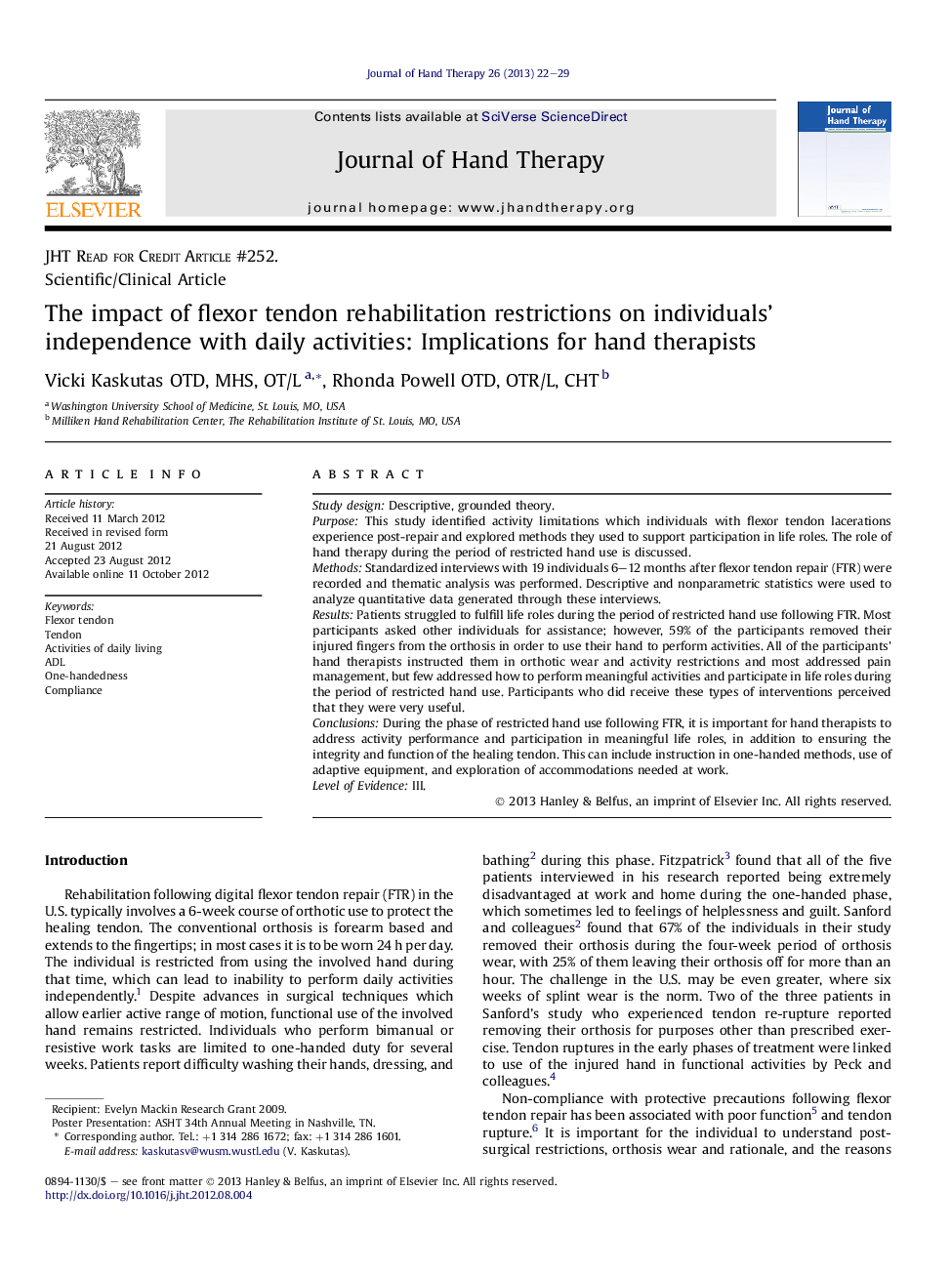| Article ID | Journal | Published Year | Pages | File Type |
|---|---|---|---|---|
| 2694878 | Journal of Hand Therapy | 2013 | 8 Pages |
Study designDescriptive, grounded theory.PurposeThis study identified activity limitations which individuals with flexor tendon lacerations experience post-repair and explored methods they used to support participation in life roles. The role of hand therapy during the period of restricted hand use is discussed.MethodsStandardized interviews with 19 individuals 6–12 months after flexor tendon repair (FTR) were recorded and thematic analysis was performed. Descriptive and nonparametric statistics were used to analyze quantitative data generated through these interviews.ResultsPatients struggled to fulfill life roles during the period of restricted hand use following FTR. Most participants asked other individuals for assistance; however, 59% of the participants removed their injured fingers from the orthosis in order to use their hand to perform activities. All of the participants' hand therapists instructed them in orthotic wear and activity restrictions and most addressed pain management, but few addressed how to perform meaningful activities and participate in life roles during the period of restricted hand use. Participants who did receive these types of interventions perceived that they were very useful.ConclusionsDuring the phase of restricted hand use following FTR, it is important for hand therapists to address activity performance and participation in meaningful life roles, in addition to ensuring the integrity and function of the healing tendon. This can include instruction in one-handed methods, use of adaptive equipment, and exploration of accommodations needed at work.Level of EvidenceIII.
